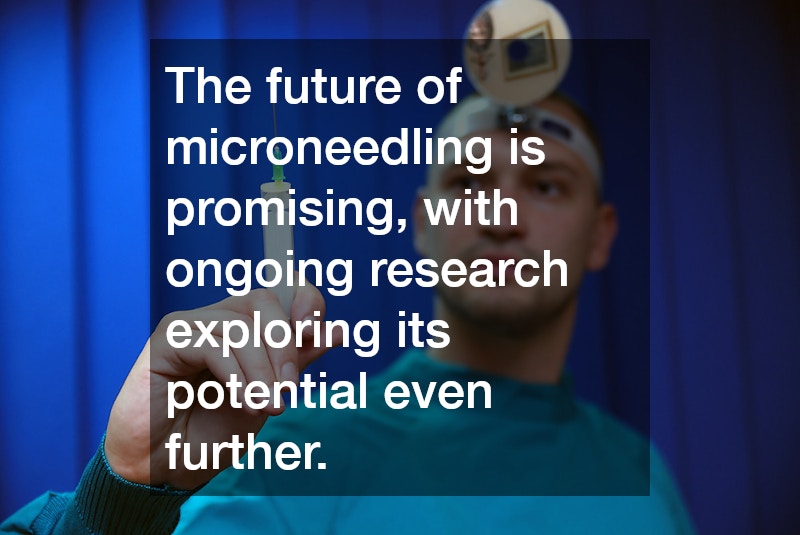In recent years, the beauty and skincare industry has experienced a surge in innovative treatments promising youthful and glowing skin. One such treatment that has become a hot topic and gained widespread attention is microneedling. This article delves into why microneedling treatment is making waves and what sets it apart from other skincare interventions.
The fascination with microneedling lies in its ability to deliver impressive results by harnessing the body’s natural healing processes. As more people seek non-invasive yet effective treatments to address skin imperfections, microneedling has emerged as a popular choice.
With its origins dating back centuries, this modern take on an ancient practice is resonating with those who desire smoother, firmer skin.
Experts and enthusiasts are praising microneedling for its multifaceted benefits that extend beyond skincare. By understanding the science behind microneedling, individuals can make informed decisions about incorporating it into their beauty regimen. This exploration will highlight the core reasons for its popularity, backed by scientific insights and testimonial evidence.
The Science Behind Microneedling
Microneedling, also known as collagen induction therapy, is a minimally invasive procedure where fine needles puncture the skin to induce a controlled skin injury. The premise is that these tiny, controlled wounds trigger the body’s natural healing response, producing new collagen and elastin. This process is crucial as collagen and elastin are proteins that maintain skin’s elasticity and firmness, thus reducing the appearance of fine lines.
The micro-injuries created by the needles are so minute that the tissue damage is negligible, but they are sufficient to initiate the body’s natural wound-healing process. As a result, the skin renews itself, subsequently leading to an improved texture and tone. This provides a dual benefit – not only does it reduce the signs of aging, but it also makes the skin more receptive to creams and serums applied afterward.
Scientific studies have demonstrated the efficacy of microneedling in treating various skin concerns such as acne scars, enlarged pores, and pigmentation. Furthermore, the treatment’s adaptability allows it to be safely performed on all skin types, making it accessible to a wider audience. As such, microneedling has become a cornerstone treatment in many dermatological and aesthetic practices.
The Benefits of Microneedling Treatment
Microneedling treatment offers a plethora of benefits that have captured the attention of skincare enthusiasts worldwide. One of the foremost advantages is its ability to stimulate collagen production, which is vital in maintaining youthful skin. Regular sessions can result in smoother, firmer skin that exudes a natural glow, drawing interest from those seeking to reduce the visible effects of aging.
Beyond its anti-aging benefits, microneedling is celebrated for its ability to improve the skin’s overall texture. For individuals suffering from acne scars and stretch marks, microneedling provides a viable solution, as it promotes regeneration of the skin and diminishes the appearance of such imperfections. The versatility of the treatment extends to reducing pore size and improving the skin’s tone, providing comprehensive skin rejuvenation.
Another significant benefit of microneedling is its compatibility with other skin treatments and products. The micro-channels created by the needles enhance the absorption of topical treatments, maximizing their efficacy. This synergy between microneedling and other skincare products contributes to improved results, making it a preferred choice for those investing in long-term skin health.
The Risks and Considerations
While microneedling treatment is largely considered safe, it is not entirely devoid of risks, which should be a consideration for potential candidates. Common side effects include temporary redness, swelling, and minor discomfort, which typically subside within a few days. However, it is important to have the procedure performed by a certified professional to mitigate risks such as infection or improper needle penetration.
Individuals with certain skin conditions, such as eczema or active acne, may not be suitable candidates for microneedling, as it may exacerbate these issues. A thorough consultation with a skincare professional can help determine eligibility and tailor the treatment to one’s specific skin needs. Additionally, those who are pregnant or have a history of poor wound healing should seek advice before undergoing the procedure.
Another consideration is the commitment to post-treatment care, which plays an integral role in the outcomes. Patients are typically advised to avoid sun exposure and make use of sunscreen diligently to protect the treated skin. Ensuring adequate hydration and following a professional’s recommendations further optimize the results and maintain skin health.
As microneedling treatment continues to gain popularity, it stands out as a revolutionary approach in the pursuit of radiant, youthful skin. Its ability to utilize the body’s healing mechanisms and deliver visible improvements has captivated a diverse audience. While it offers numerous benefits, understanding the risks and optimizing care are crucial for achieving the best outcomes.
The treatment’s adaptability to various skin types and conditions underlines its appeal, as it can cater to a broad range of individuals seeking effective skincare solutions. The future of microneedling is promising, with ongoing research exploring its potential even further. Ultimately, those who opt for this treatment can look forward to comprehensive skin rejuvenation and a boost in confidence.
As individuals increasingly seek non-invasive and effective skincare interventions, microneedling treatment emerges as a compelling option. By keeping abreast of its developments and ensuring informed decision-making, enthusiasts can make the most out of this innovative treatment. A harmonious blend of science and beauty, microneedling continues to shape the landscape of modern skincare.





